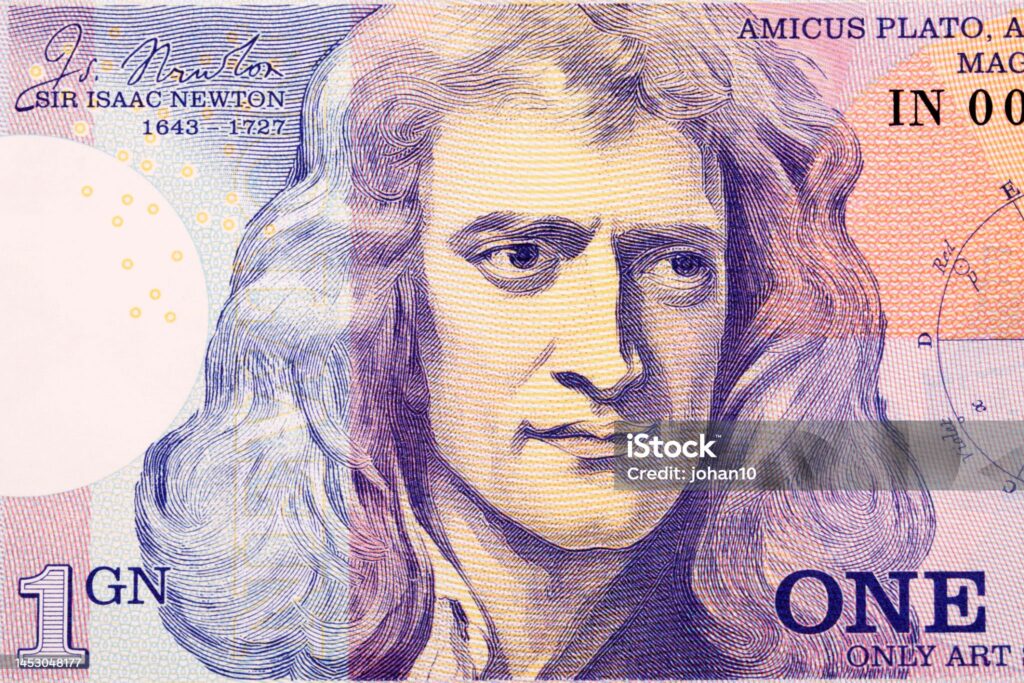1.Which of the following is not a base unit in the International System of Units (SI)?
(a) Meter
(b) Kilogram
(c) Newton
(d) Second
Answer: (c) Newton
Explanation: Newton is a derived unit for force, but meter, kilogram, and second are base units.
2. The SI unit of electric current is:
(a) Ampere
(b) Volt
(c) Coulomb
(d) Ohm
Answer: (a) Ampere
Explanation: Ampere is the base unit of electric current in the SI system.
3. Which of the following quantities has the same dimensions as energy?
(a) Force × Displacement
(b) Mass × Velocity
(c) Power × Time
(d) Work / Time
Answer: (a) Force × Displacement
Explanation: Energy is dimensionally equivalent to work, which is force X displacement.
4. What is the dimension of Planck’s constant (h)?
(a) [MLT-2]
(b) [ML 2T-2]
(c) [ML 2T-2]
(d) [MLT-2]
Answer: (b) [ML 2T-2]
Explanation: Planck’s constant has the dimension of energy (ML 2T-2) times time (T), giving [ML 2T-1].
5. Which of the following is a dimensionless quantity?
(a) Strain
(b) Stress
(c) Work
(d) Velocity
Answer: (a) Strain
Explanation: Strain is the ratio of change in length to original length, which is dimensionless.
6. The unit of force in the CGS system is:
(a) Dyne
(b) Newton
(c) Erg
(d) Joule
Answer: a) Dyne
Explanation: Dyne is the CGS unit of force, where 1 Newton = 105 dyne.
7. Which of the following physical quantities has the unit “Joule”?
(a) Power
(b) Work
(c) Momentum
(d) Pressure
Answer: b) Work
Explanation: Work and energy are measured in Joules.
8. The dimensional formula of pressure is:
a) [ML -1T -1]
b) [MLT -2]
c) [ML 2T -2]
d) [ML 3T-2]
Answer: a) [ML -1T -2]
Explanation: Pressure is force per unit area, which gives the dimensional formula [ML -1T -2].
9. The unit of frequency in the SI system is:
(a) Hertz
(b) Decibel
(c) Joule
(d) Watt
Answer: (a) Hertz
Explanation: Frequency is measured in Hertz (Hz), which is equivalent to one cycle per second.
10.Which of the following is a scalar quantity?
(a) Velocity
(b) Force
(c) Acceleration
(d) Temperature
Answer: (d) Temperature
Explanation: Temperature has magnitude but no direction, making it a scalar quantity.
11. The SI unit of luminous intensity is:
(a) Candela
(b) Lumen
(c) Lux
(d) Watt
Answer: (a) Candela
Explanation: Candela is the base unit of luminous intensity in the SI system.
12. Which of the following is not a fundamental quantity?
(a) Length
(b) Time
(c) Volume
(d) Mass
Answer: (c) Volume
Explanation: Volume is a derived quantity, whereas length, time, and mass are fundamental quantities.
13. The dimensional formula of angular velocity is:
(a) [T -1]
(b) [T 1]
(c) [M 1T -2]
(d) [L -1T 1]
Answer: (a) [T -1]
Explanation: Angular velocity is measured in radians per second, giving the dimensional formula [T -1].
14. The SI unit of power is:
(a) Joule
(b) Watt
(c) Pascal
(d) Coulomb
Answer: (b) Watt
Explanation: Power is the rate of doing work, measured in Watts.
15. What is the dimensional formula of momentum?
(a) [MLT -1]
(b) [ML -1T -2]
(c) [M 1L 2T -2]
(d) [ML -2T 2]
Answer: a) [MLT -1]
Explanation: Momentum is mass times velocity, which gives the dimensional formula [MLT -1].
16. One nanometer is equal to:
(a) 10 -9 meters
(b) 10 -6 meters
(c) 10 -3 meters
(d) 10 -12 meters
Answer: a) 10 -9 meters
Explanation: Nano- is a prefix that denotes 10 -9.
17. The SI unit of charge is:
(a) Coulomb
(b) Ampere
(c) Volt
(d) Farad
Answer: (a) Coulomb
Explanation: Charge is measured in Coulombs in the SI system.
19. The number of significant figures in 0.00450 is:
(a) 2
(b) 3
(c) 4
(d) 5
Answer: (b) 3
Explanation: The significant figures are 4, 5, and 0, making a total of 3.
19. Which of the following is a vector quantity?
(a) Displacement
(b) Distance
(c) Speed
(d) Energy
Answer: (a) Displacement
Explanation: Displacement has both magnitude and direction, making it a vector.
20. The dimensional formula of force is:
(a) [MLT -2]
(b) [ML -1T -2]
(c) [ML 2T -2]
(d) [ML -2T 2]
Answer: (a) [MLT -2]
Explanation: Force is mass and acceleration, which gives the dimensional formula [MLT -2].
21. The SI unit of work is:
(a) Joule
(b) Newton
(c) Watt
(d) Pascal
Answer: (a) Joule
Explanation: Work and energy are measured in Joules.
22. Which of the following has the same dimensions as that of force?
(a) Momentum
(b) Work
(c) Energy
(d) Impulse
Answer: (d) Impulse
Explanation: Impulse is force multiplied by time, which has the same dimensions as force.

23. The unit of temperature in the SI system is:
(a) Celsius
(b) Kelvin
(c) Fahrenheit
(d) Rankine
Answer: (b) Kelvin
Explanation: The Kelvin is the SI base unit of temperature.
24. Which of the following quantities is dimensionless?
(a) Refractive index
(b) Force
(c) Power
(d) Charge
Answer: (a) Refractive index
Explanation: Refractive index is a ratio of the speeds of light and is dimensionless.
25. The unit of energy in the CGS system is:
(a) Erg
(b) Joule
(c) Calorie
(d) Dyne
Answer: (a) Erg
Explanation: Erg is the CGS unit of energy, where 1 Joule = 10 7 erg.
26. The dimensional formula of Planck’s constant (h) is:
(a) [ML 2T -1]
(b) [MLT -2]
(c) [ML 2T -2]
(d) [ML 2T -3]
Answer: a) [ML 2T -1]
Explanation: Planck’s constant has the dimensions of energy (ML 2T -2) X time (T), giving [ML 2T -1].
27. Which of the following is a fundamental unit in the SI system?
(a) Volt
(b) Candela
(c) Joule
(d) Ohm
Answer: (b) Candela
Explanation: Candela is a fundamental unit of luminous intensity in the SI system.
28. The dimensional formula of power is:
(a) [ML 2T -3]
(b) [MLT -2]
(c) [ML 2T -2]
(d) [ML -1T -2]
Answer: (a) [ML 2T -3]
Explanation: Power is the rate of doing work, which is energy per unit time, giving the dimensional formula [ML^2T^-3].
29. The SI unit of pressure is:
(a) Pascal
(b) Bar
(c) Torr
(d) Atmosphere
Answer: (a) Pascal
Explanation: Pascal is the SI unit of pressure, equal to one Newton per square meter.
30. The unit of length commonly used to measure atomic scales is:
(a) Meter
(b) Angstrom
(c) Micron
(d) Nanometer
Answer: (b) Angstrom
Explanation: Angstrom (10 -10 meters) is commonly used to measure atomic distances.
31. Which of the following is not a derived unit?
(a) Pascal
(b) Coulomb
(c) Newton
(d) Kilogram
Answer: (d) Kilogram
Explanation: Kilogram is a base unit, while the others are derived units.
32. The unit of magnetic field strength in the SI system is:
(a) Tesla
(b) Gauss
(c) Weber
(d) Oersted
Answer: (a) Tesla
Explanation: Tesla is the SI unit of magnetic field strength
33. What is the unit of electric capacitance in the SI system?
(a) Farad
(b) Henry
(c) Coulomb
(d) Ohm
Answer: (a) Farad
Explanation: Capacitance is measured in Farads, which is the SI unit for this quantity.
34. The SI unit of inductance is:
(a) Weber
(b) Henry
(c) Tesla
(d) Farad
Answer: (b) Henry
Explanation: Henry is the SI unit of inductance
35. Which of the following pairs has the same dimensional formula?
(a) Work and Energy
(b) Force and Momentum
(c) Power and Work
(d) Pressure and Force
Answer: (a) Work and Energy
Explanation: Both work and energy have the dimensional formula [ML 2T -2].
36. The unit of solid angle in the SI system is:
(a) Radian
(b) Steradian
(c) Degree
(d) Minute
Answer: (b) Steradian
Explanation: Steradian is the SI unit of solid angle.
37. The number of base units in the International System of Units (SI) is:
(a) 5
(b) 6
(c) 7
(d) 8
Answer: (c) 7
Explanation: There are 7 base units in the SI system: meter, kilogram, second, ampere, kelvin, mole, and candela.
38. The SI unit of luminous flux is:
(a) Lumen
(b) Lux
(c) Candela
(d) Watt
Answer: (a) Lumen
Explanation: Lumen is the SI unit of luminous flux.
39. The unit of pressure commonly used in meteorology is:
(a) Pascal
(b) Bar
(c) Torr
(d) Atmosphere
Answer: (b) Bar
Explanation: Bar is commonly used in meteorology to measure atmospheric pressure.
40. Which of the following is an example of a derived quantity?
(a) Time
(b) Length
(c) Volume
(d) Mass
Answer: (c) Volume
Explanation: Volume is derived from the base quantity of length.
41. Which of the following is not an SI base unit?
(a) Kilogram
(b) Second
(c) Mole
(d) Gram
Answer: (d) Gram
Explanation: Kilogram is the SI base unit of mass, not gram.
42. The SI unit of resistivity is:
(a) Ohm meter
(b) Ohm
(c) Siemens
(d) Henry
Answer: (a) Ohm meter
Explanation: Resistivity is measured in ohm meters
